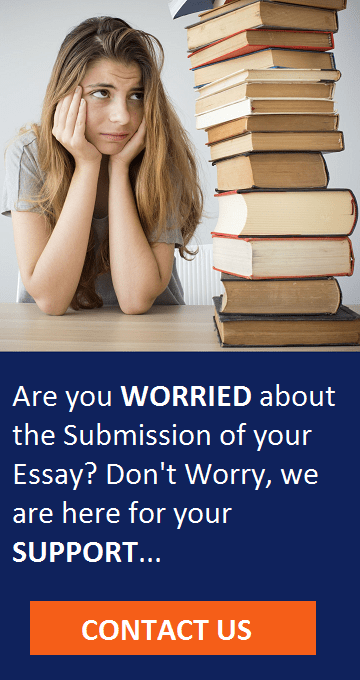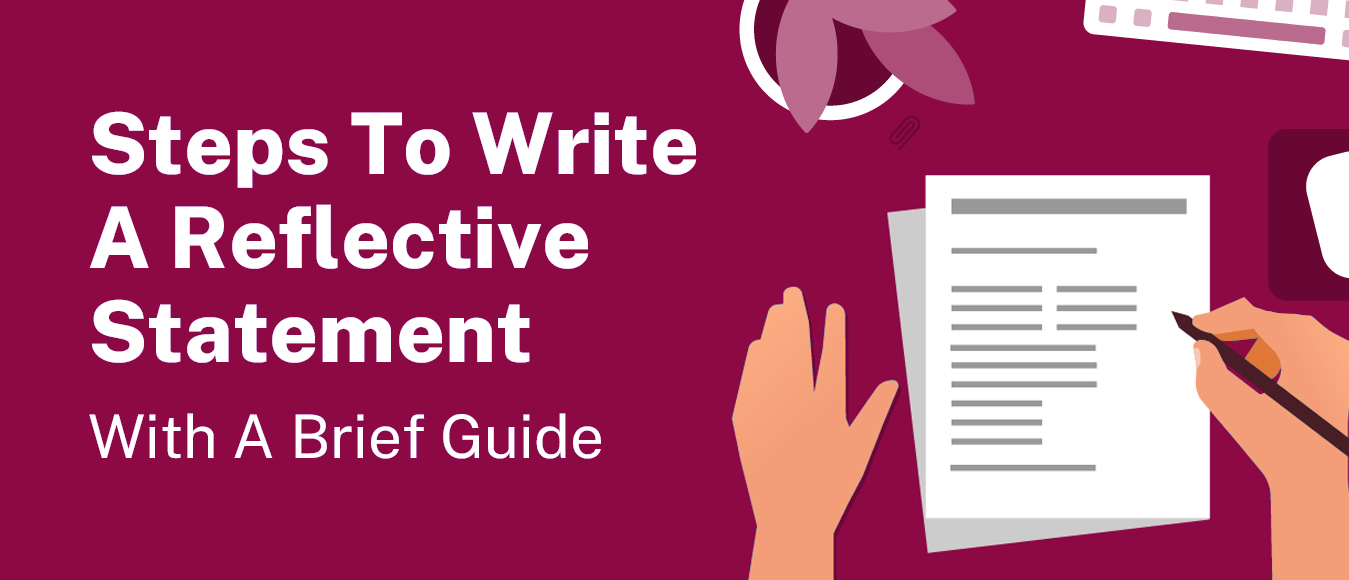Steps to write a reflective statement with a brief guide
Reflective statement introduction
Reflective statements are essential tools for reflection, learning, and self-improvement in the areas of academic and personal development. Whether you’re a professional, a student, or just trying to understand your experiences better, the process of creating a reflective statement can be life-changing. This thorough tutorial will show you how to create an effective reflective statement and will provide you with ideas, advice, and examples to help you perfect the craft.
What is a Reflective Statement?
Let’s define a reflective statement first before going into the steps. A reflective statement is a piece of writing that examines your feelings, thoughts, and realizations regarding a particular experience, occasion, or topic. It entails critical self-examination, enabling you to comprehend yourself, your behaviors, and the environment around you more fully.
Types of reflective statement
Self reflective statement
A personal essay that focuses on self-analysis and introspection is called a self-reflective statement. It is frequently used to examine one’s own ideas, feelings, experiences, and personal development. Self-reflective comments are frequently linked to therapy procedures, personal growth, or just the process of self-discovery. They can talk about everything, from ordinary occurrences to incidents that change your life.
CPD reflective statement
CPD reflective statements are frequently used in professional settings, particularly by those in occupations like healthcare, education, and business that demand continuous learning and growth. Your comments on your professional experiences, learning experiences, and skill development are documented in these statements. Reflective statements for CPD frequently incorporate learnings from seminars, classes, conferences, or work-related experiences. They support professionals in setting goals, evaluating their progress, and developing their skills.
Personal reflective statement
Contemplations on various aspects of your life, encounters, and individual convictions encompass the broad domain of personal reflections. These reflections find utility in self-expression, narrating personal narratives, or as components of applications for courses, employment opportunities, or therapeutic processes. Personal reflections concerning one’s life often delve into topics such as philosophical concepts, cultural encounters, transformative incidents, and achievements. They provide you with a platform to convey your thoughts, values, and life journey. If you ever require assistance with your personal reflections, you can explore the option of “write my essay cheap online” to access affordable and reliable support for your writing needs.
Example of a reflective statement
Description of the Experience: I was shocked to learn that I had lost my job. I had worked for the business for many years, so the abrupt transition left me feeling adrift and unsure of my future.
Expressing Initial Reactions: Immediately after, I was overcome with a variety of feelings, including rage, worry, and self-doubt. I doubted my skills and dreaded the unknowable.
Steps to write a reflective statement with a brief guide
1. Choose a Related Experience:
Pick a memorable and applicable experience or occasion that will contribute to your education or personal development. It should be something that makes you stop and think carefully.
2. Produce a Plan:
Make a basic outline of the main ideas you want to discuss before you start writing. This will assist you in maintaining organization and concentration while writing.
3. Set the Scene in the Introduction:
Create a brief introduction to your reflective statement that establishes the context for your reflection. Describe the experience’s setting and the reasons it merits reflection.
4. Summaries the Situation:
Give a thorough account of the encounter. Include details like the occasion’s time and location, participants, and specific activities or events that took place.
5. Examine Your Emotions:
Why did you feel the way you did during the experience? Consider this. Think about any prejudices, suppositions, or preconceptions you may have that may have influenced your feelings.
6. Identify Important Takeaways:
Describe the main takeaways or revelations you had as a result of the encounter. What did you discover about the circumstance, yourself, or others?
7. Take into Account Other Viewpoints
Consider for a moment how or what others who shared the same situation would have felt or learned. This reveals empathy and a deeper comprehension of the circumstance.
8. Go over Personal Development:
Describe how this experience helped you grow or develop personally. Did it in any way alter your perspective, bolster your abilities, or question your beliefs?
9. Conclusion
Recap Key Takeaways: Include a summary of the main conclusions from your reflection in your conclusion. Finish with a poignant sentence that binds everything together.
10. Revision and Proofreading:
After drafting your first draught, take a break. Then, come back to your reflective statement and make any necessary corrections. Maintain coherence, clarity, and proper grammar and spelling.
11. Seek Recommendations:
Take into account showing your reflective statement to a dependable friend, mentor, or advisor. Their opinions might offer insightful insights and constructive criticism.
To successfully communicate your ideas, feelings, and insights regarding a particular experience or issue, a well-structured reflective statement is essential. The following is a typical framework that you can use as a guide, while the precise format may change depending on your objectives and personal preferences.
Reflective statement structure
Introduction:
Commence your essay with a succinct introduction that skillfully sets the stage for your contemplation. Justify the relevance or applicability of the experience or topic you’re about to reflect upon. This crucial segment of your essay is designed to engage the reader and establish the foundation for your reflection. If you ever find yourself in need of expert assistance, you can explore the option of cheap essay writers UK to access cost-effective and proficient support for your writing endeavors.
Description of the Experience:
Provide a comprehensive and impartial account of the experience. Include relevant background details such as the date, location, participants, and specific activities or events that occurred. This paragraph should offer an objective overview of the events that took place. Should you ever require expert guidance, consider exploring the option of MBA essay help online to access valuable support for your writing needs.
Express first impressions:
Share what you were thinking, feeling, and doing at the time the experience happened. Be frank and truthful about how you are feeling right now. You can effectively communicate your feelings by using descriptive words.
Review and introspection
The core of your introspective statement is this. Why did you feel the way you did during the experience? Consider this. Think about any prejudices, suppositions, or preconceptions you may have that may have influenced your feelings. Examine the circumstances critically and the causes of your reactions.
Identify the Main Takeaways:
Describe the main takeaways or revelations you had as a result of the encounter. What did you discover about the circumstance, yourself, or others? Your analysis and introspection should lead to these revelations.
Take into account different viewpoints:
Show that you can take into account different views or the thoughts and feelings of those who were part of the experience. This demonstrates knowing the situation completely and empathetically.
Discuss Personal Development
Describe how this experience helped you grow or develop personally. Did it in any way alter your perspective, bolster your abilities, or question your beliefs? Consider how this experience has helped you grow.
Conclusion:
Include a summary of the main conclusions from your reflection in your conclusion. The importance of the encounter and its effect on you should be emphasized once more. Finish with a sincere statement that ties everything together and leaves an impact.
Personal Importance
The personal significance of this insight in your life, academic or professional journey, or personal development can optionally be covered in a brief section.
If appropriate, cite these sources:
Include a list of references in the proper citation format if your reflective statement refers to specific concepts, theories, or works of literature or depends on outside sources.
Editing and proofreading:
Be sure to properly review and update your reflective statement after completing the first draught. Maintain coherence, clarity, and proper grammar and spelling.
Conclusion
Writing reflective statements is an important skill that encourages self-awareness, personal development, and career advancement. By carefully following the instructions in this manual, you may create a reflective statement that not only sums up your experiences but also offers suggestions and lessons for the future. Embracing the skill of reflection can help you succeed more and develop yourself, whether you’re a student, professional, or lifelong learner.

Recent Posts
- Steps to write a reflective statement with a brief guide
- How To Structure Paragraphs Using The PEEL Method For An Essay?
- Issues With Nursing Study, Contemporary Issues For Nurses And Its Practice
- Everything about Rolfe Reflective Model Questions What? So What? Now What?
- Writing 3000 words essay and no of references should a 3000 word essay have?

